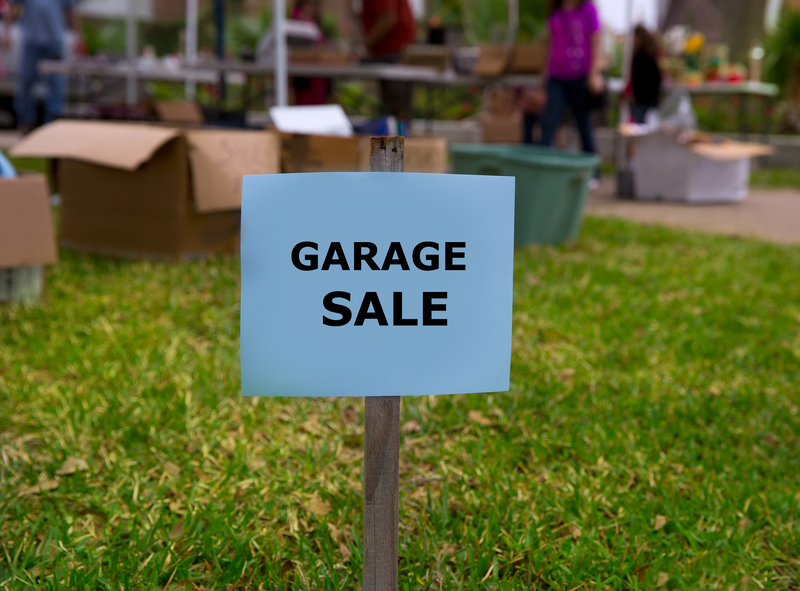Maintain a Tidy Space: Effective Tips for Post-Clear-Out Clutter Control
Keeping your living or working space tidy can often feel overwhelming, especially after a major decluttering session. While the process of clearing out unwanted items can be liberating, maintaining that refreshed, organized state over the long term presents a unique challenge. By adopting practical habits and strategies, you can ensure your home or office remains clutter-free and welcoming.
This comprehensive guide provides effective tips for post-clear-out clutter control, ensuring you sustain a seamless, organized environment. Discover actionable advice to help you maintain a tidy space and avoid reverting to old, clutter-prone habits.

Why Post-Clear-Out Clutter Control Is Important
After investing time and effort into decluttering, maintaining your hard-earned organization is essential for several reasons:
- Improved Mental Wellbeing: A clutter-free space reduces stress and enhances your mood.
- Increased Productivity: An organized environment fosters efficiency and focus.
- Hygiene and Safety: Keeping things tidy supports cleanliness and minimizes risks, like tripping hazards.
- Preserved Time and Energy: Avoid constantly having to clean up messes or re-organize by keeping up with clutter control.
Committing to these post-clear-out principles will help create a sustainable cycle of order and peace in your environment.
Develop a Clutter-Prevention Mindset
The key to effective clutter management lies in changing your relationship with possessions and developing new habits. Recognize that it's much easier to prevent clutter from creeping back in than to repeat mammoth decluttering sessions.
Adopt the "One In, One Out" Rule
- Every time you acquire something new, commit to removing a similar item from your space.
- This practice is especially valuable for high-clutter zones like wardrobes, kitchens, and kids' playrooms.
By consciously evaluating what you bring into your home, you'll be more aware of how quickly clutter can accumulate.
Practice Mindful Acquisition
- Before making purchases, ask yourself: Do I genuinely need this? and Do I have space for it?
- Consider the long-term value and use of every new item.
- Resist impulse buys; aim for intentional shopping.
Reducing the flow of unnecessary items into your space is one of the most impactful techniques for sustaining an organized home.
Establish Simple Daily and Weekly Maintenance Habits
Establishing daily and weekly routines can dramatically improve your ability to keep a tidy home after decluttering. Consistency, rather than intensity, is the secret to ongoing success.
Daily Clutter Sweep
- Set aside 5-10 minutes each day for a quick cleanup.
- Enlist family or roommates for a group power-tidy session.
- Clear surfaces like counters, tables, and desks at the end of the day.
Making this a habit -- much like brushing your teeth -- embeds a natural rhythm of orderliness.
Weekly Declutter Check-In
- Designate a day, such as Sunday, for minor decluttering tasks.
- Check common drop-zones (entryways, kitchen islands, bedside tables) for items that have migrated out of place.
- Commit to resetting your space weekly so that minor messes don't spiral out of control.
Organize with a Purpose: Smart Storage Solutions
Effective post-clear-out clutter control relies on giving everything a dedicated, logical place. The better your storage solutions, the easier it is to tidy up--and for everyone in the household to follow your lead.
Use Containers, Bins, and Baskets
- Group similar items together in clearly labeled containers to keep things organized.
- Easily accessible bins encourage quick and simple clear away routines, especially in high-traffic areas.
- Opt for transparent bins for visibility, or opaque ones for visual calm depending on your preference.
Maximize Vertical Space
- Install shelves on walls to store books, decor, or frequently used items.
- Utilize over-the-door racks for shoes, accessories, or cleaning supplies.
Zone Organization
- Break larger rooms into functional zones--for example, a reading nook, work area, and entertainment section in your living room.
- Assign containers or furniture to each zone, reinforcing a logical flow and keeping things where they're needed.
Maintain Clear Surfaces
- Adopt a "clear countertop policy" in the kitchen and bathroom.
- Use trays or small organizers for everyday essentials, like keys and wallets, to prevent sprawling messes.
Involve Everyone: Family and Shared Spaces
Maintaining a tidy environment is a shared responsibility. If you live with family or roommates, getting everyone committed to clutter control multiplies your strength and reduces the mental and physical load for individuals.
Assign Roles and Responsibilities
- Divide daily or weekly tidy tasks among household members.
- Consider making a chore chart or using a shared checklist app to keep everyone accountable.
Encourage Ownership
- Empower kids to sort and organize their own belongings with age-appropriate tools and baskets.
- Regularly review storage spaces with family, discussing what can be donated or recycled together.
Digital Decluttering: Control Virtual Clutter
A modern post-clear-out home is not just about the physical stuff. Digital clutter -- messy desktops, overflowing email inboxes, and scattered files -- can impact productivity and add to your mental load. Include digital tidy-ups in your maintenance regime.
Set Up Digital Storage Systems
- Create simple, logical folder structures for your files and photos.
- Regularly move items from downloads or your desktop into their correct locations.
Routine Inbox Zero
- Choose a set time each week to manage your email inbox.
- Unsubscribe from irrelevant newsletters, and archive or delete old messages.
Cloud and Device Maintenance
- Sort through and delete old or unused apps on your devices.
- Back up important files regularly and discard duplicates or obsolete documents.
Refresh Your Space Seasonally
A clean-out isn't just for spring. Schedule seasonal organization sessions to reevaluate, reorganize, and reassess your belongings.
- Switch out seasonal clothing and donate or discard anything unworn from the previous season.
- Check your pantry, cleaning closet, or garage for expired or unneeded items.
- Refresh your storage solutions - upgrade bins, repair shelves, or refine your zoning as needed.
These periodic reviews will stop clutter from accumulating unnoticed and help you maintain an orderly home year-round.
Set Realistic Expectations and Embrace Progress
Remember, the goal isn't perfection but regular improvement. Life is full and busy, and it's normal for your space to get a bit messy from time to time. The key is to bounce back quickly and not let temporary disorder become the norm again.
- Celebrate the progress you've made since your big clear-out.
- Be patient with yourself and others as you build new habits.
- Keep things in perspective--a functional space is always better than a perfectly "showroom-ready" room.
Common Pitfalls: What Causes Clutter to Return?
Understanding why clutter tends to creep back in can help you prevent it. Some typical causes include:
- Sentimental Attachment: Difficulty letting go of gifts, mementos, or souvenirs.
- Unclear Storage: Items without assigned homes often become stray clutter.
- Busy Lifestyles: Hectic schedules that leave little time for daily maintenance.
- Permission to Pile: Allowing "temporary" drop zones that quickly become permanent mess magnets.
By being aware of these traps, you can take early action and reset your space before messes get out of hand.

Quick-Reference: Action Plan for Ongoing Clutter Control
- Set Clear Goals: Define what a tidy, clutter-free space means for you.
- Create and Label Storage: Ensure everything has a clearly defined home.
- Practice Regular Maintenance: Dedicate a few minutes daily and a little longer weekly for quick resets.
- Monitor Inflow: Be intentional about new items entering your home or office.
- Engage Household Members: Make clutter control a team effort.
- Review Seasonally: Schedule periodic check-ins to reassess your space and organization systems.
Conclusion: Make Clutter Control a Lifestyle
Maintaining a tidy space after a major clear-out is not a one-time event but an ongoing lifestyle choice. With these effective tips for post-clear-out clutter control, you'll transform your home or workplace into a sanctuary that supports your wellbeing, focus, and peace of mind.
Stay proactive, involve your household, and handle both physical and digital clutter with regular care. Over time, these simple yet powerful habits will help you enjoy a consistently organized and inviting space--making clutter a thing of the past.






